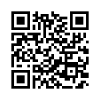PENYUSUNAN BAHAN AJAR DENGAN PENGINTEGRASIAN KOMPETENSI LISTENING DAN SPEAKING BAGI MAHASISWA PBI
B. Yuniar Diyanti, Universitas Negeri Yogyakarta, Indonesia
Siwi Karmadi Kurniasih, Universitas Negeri Yogyakarta, Indonesia
Abstract
(Title: Development of Teaching Materials By Integrating Listening and Speaking Competency For PBI Students). This study aims to produce teaching material models by integrating listening and speaking competencies. This research is a type of research and development (Research and Development). The research subjects were 5th semester students who had taken the Listening for Academic Purposes and Speaking for Academic Purposes courses. The integration of learning material in the Listening for Academic Purposes (LAP) and Speaking for Academic Purposes (SAP) courses for PBI students in semester 4 is very necessary. The steps that have been carried out in this study have reached the stage of needs analysis and have succeeded in identifying several important things needed in developing teaching materials such as types of texts, activities needed and liked by students, types of media that can be used, reaction patterns and assessments . The learning material in the LAP course is prioritized on providing exposure to prepare students to be able to produce appropriate speeches and expressions in the SAP class.
Keyword: bahan ajar, listening, speaking, academic purposes
Full Text:
PDFReferences
Bailey, K. M. (2003). Speaking. In D. Nunan (Ed.). Practical English language teaching 47-65. New York: The McGraw Hill-Companies. Inc.
Brown, H. D. (2001). Teaching by principles: An interactive approach to language Pedagogy. (2nd ed). New York: Addison Wesley Longman Inc.
Borg, W.R. & Gall, N.B. (2003) Educational research: An introduction (7th ed). New York: Pearson Education Inc.
Burns, A. (2001). Analysing spoken discourse: Implication for TESOL. In A. Burns & C. Coffin (Eds). Analysing English in a global context: A reader 123-148. London: Routledge
Kurniasih, S.K. & Diyanti, B.Y. (2009). Teaching Material Kits Using Authentic Video for Speaking III in English Education Department, Yogyakarta State University. 8th Asia Computer Assisted Language Learning (ASIACALL) Conference Proceeding
Luoma, S. (2004). Assessing speaking. Cambridge: Cambridge University Press
Miccoli, L. (2003). English through drama for oral skills development. ELT Journal 57/2, 122-129
Miles, M.B., Huberman, A.M. & Saldana, J. (2014). Qualitative data analysis: A method source book. Thousand Oaks: Sage
Nunan, D. (2015). Teaching English to speakers of other languages: An introduction. New York: Routledge.
Richards, J.C. (2008). Teaching listening and speaking. Cambridge: Cambridge University Press.
Shrum, J.L. & Glisan, E.W. (2005). Teacher’s handbook: Contextualized language instruction. (3rd ed.). Boston: Thomson Heinle
Shumin, K. (2002). Factors to consider: developing adult EFL students’ speaking abilities. In J.
C. Richards, & W. A. Renandya (Eds.). Methodology in language teaching: An anthology of current practice 204-211. Cambridge: Cambridge University Press
Skehan, P. (2001). Comprehension and production strategies in language learning. In C. N. Candlin & N. Mercer (Eds). English language teaching in its social context: A reader 75-89. London: Routledge
Skehan, P. (1998). A cognitive approach to language learning. Oxford: Oxford University Press
Tenenbaum, G., et al. (2001). Constructivist pedagogy in conventional on campus and distance learning practice: An exploratory investigation. Learning and Instruction 11, 87-111
Thornburry, S. (2005). How to teach speaking. Edinburg Gate: Pearson Education Limited Vidal, K. (2003), Academic listening: A source of vocabulary acquisition? Applied Linguistics 24/1: 56-89. Oxford: Oxford University Press.
Wilson, J. F. et al. (1990). Public Speaking as a liberal art. Massachusetts: Allyn and Bacon
DOI: https://doi.org/10.21831/diksi.v27i1.26179
Refbacks
- There are currently no refbacks.
Copyright (c) 2019 Diksi
Jurnal Diksi is published by Faculty of Languages, Arts, and Culture, Universitas Negeri Yogyakarta. It is licensed under a Creative Commons Attribution-ShareAlike 4.0 International License. Based on a work at http://journal.uny.ac.id/index.php/diksi
Our Journal has been Indexed by:
Diksi Journal is published by the Faculty of Languages, Arts, and Culture Universitas Negeri Yogyakarta in collaboration with Himpunan Sarjana Kesusasteraan Indonesia (HISKI)
Supervised by:

2.png)














